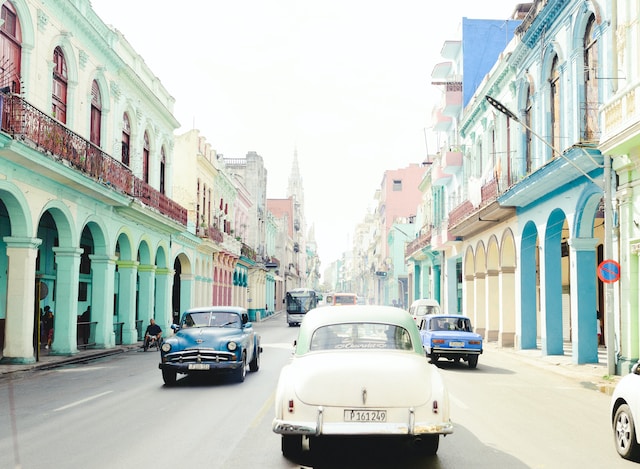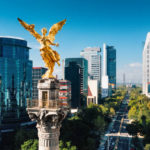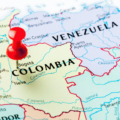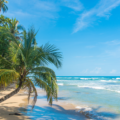A surprising destination – the digital nomad guide to Havana
Is the hustle and bustle of Havana, Cuba calling your name as a digital nomad? Like you, I was captivated by its vibrant culture, rich history and warm weather. Being a proficient digital nomad myself, I spent some time living in Havana and gathered essential insights to help you settle with ease.
Let’s dive deep into the heart of Cuba together – there’s a unique adventure waiting for every type of traveler!
Key Takeaways
- Havana, Cuba offers a unique and culturally rich experience for digital nomads with its vibrant atmosphere, warm weather, and affordable living options.
- Finding suitable co – working spaces in Havana can be challenging, but there are alternatives such as shared offices and cafes that can serve as temporary workspaces.
- Internet availability in Havana may be limited compared to other countries, but there are options like purchasing WiFi cards or accessing 3G data to stay connected. It’s important to research and prepare before arriving.
- Banking and currency exchange can be managed by having access to cash as credit cards are not widely accepted. ATMs are available, but it’s recommended to withdraw larger amounts at once. Currency exchange services can also be found throughout the city.

Havana, Cuba
Living in Havana as a Digital Nomad
Living in Havana as a digital nomad offers the perfect combination of warm weather, vibrant culture, and affordable living.
Average Temperature and Rainfall/best time to visit
Living and working in Havana, Cuba as a digital nomad requires an understanding of the local climate. The city has a distinct wet and hot summer season, with the average temperature around 27 degrees Celsius. On the other hand, its cool season from December to March offers drier and milder weather. Rainfall is another important consideration as it significantly varies throughout the year. Here’s a breakdown of Havana’s average temperature and rainfall:
| Season | Average Temperature (°C) | Average Rainfall (mm) |
|---|---|---|
| Summer (June – August) | 27 – 32 | High |
| Cool Season (December – March) | Mild and Dry | Low |
Knowing the climate patterns will maximize your productivity as a digital nomad in Havana. Despite the weather challenges, the city’s vibrant atmosphere and cultural experience make all the adaptation efforts worthwhile.
Best Places to Work and Stay
Living as a digital nomad in Havana is one of the most unique experiences you can have. Your journey commences with finding the best places to work and stay:
- Home Base: Think about starting your Cuban adventure in Vedado, a vibrant neighborhood filled with modern amenities, local eateries, and charming casas (homes). It’s quite popular among foreigners due to its proximity to central Havana.
- Co-Working Spaces: Although Havana might not be a hotspot for co-working spaces yet, check out Negro Cobre Coffee Club. With decent wifi and great coffee, it makes for an ideal workspace.
- Hostels are Gateways: Hostel life is a perfect place to meet like-minded travelers and fellow digital nomads. Villares Hostel comes highly recommended, offering superb hostel suite accommodations with shared workspaces.
- Cafes as Offices: I’ve spent countless hours sipping on Cuba’s renowned coffee while tackling my projects from quaint cafes like El Cafe or Cafe Fortuna Joe; both offer decent connectivity and energizing ambiance.
- Accommodations: Consider staying at an Airbnb or a casa particular (private home). Many Cubans rent out rooms or entire apartments which afford you both privacy and a familial connection to Cuba’s culture.
- Outdoor Spaces: If you’re willing to tackle internet challenges head-on with 4G data or Wifi cards, turn any beautiful park into your office. Parque de la Fraternidad is my favorite spot to work outdoors whilst soaking in the Havana sun.
Finding Accommodation
Navigating your way through Havana’s housing market might be a bit tricky, but it’s far from impossible. The city offers various accommodation options suited for digital nomads like you.
From casa particulares – private homes turned into guesthouses by Cubans, to modern Airbnb listings complete with Wi-Fi for those crucial video conferences. Although finding reliable internet is tough in this Cuban capital and not all accommodations offer steady access, services like Airbnb have made the task somewhat easier by providing filters to search properties that include Wi-Fi as a key amenity.
It’s recommendable that before signing off any rental agreement, check if the place has stable internet connection or not; after all, your livelihood depends on it! Also don’t shy away from reaching out to digital nomad communities and associations in the region who can provide firsthand suggestions on living quarters based on their experiences making the process of securing your perfect dig smoother and comfortable.
Visa Requirements
To move to Havana as a digital nomad, it’s important to understand the visa requirements. Here is what you need to know:
- Cuba has a relatively restrictive visa and residency policy.
- For digital nomads staying in Havana for a shorter period of time, visa requirements are not an issue.
- Tourists visiting Cuba for tourism purposes do not require a visa.
- To move to Cuba as a digital nomad, one must obtain a long – term Cuba visa or temporary residence visa.
- The type of visa required depends on the purpose of relocation.
- Before moving to Cuba, it is important to understand the different types of visas available, such as tourist visas, student visas, family visas, or work visas.
- The cost of obtaining a visa can vary depending on the type and duration of stay.
- Digital nomads should consult with the Cuban embassy or consulate in their home country for specific visa requirements and application procedures.
- It’s important to start the visa application process well in advance to allow for any unexpected delays or processing times.
- Keep in mind that rules and regulations regarding visas can change, so it’s always important to double-check with official sources for up-to-date information.
Citizens of the following countries DO NOT require a visa to visit Cuba for tourism purposes…
1. Antigua and Barbuda
2. Barbados
3. Belarus
4. Benin
5. Bosnia and Herzegovina
6. Grenada
7. Macedonia (North Macedonia)
8. Mongolia
9. Montenegro
10. Russia
11. Serbia
12. Saint Kitts and Nevis
13. Saint Vincent and the Grenadines
14. Saint Lucia
15. São Tomé and Príncipe
16. Seychelles
17. Singapore
18. Ukraine
19. Uzbekistan
20. Venezuela
Please note that visa requirements can change, so it is always advisable to check with the Cuban embassy or consulate in your country for the most up-to-date information before planning your trip.
Cost of Living
Living in Havana as a digital nomad may be a thrilling experience, especially considering the city’s cultural richness and affordability. To give you a snapshot of what you can expect to spend, I’ve put together a table detailing some average living costs.
| Expense Category | Average Cost (in USD) |
|---|---|
| Accommodation (per month) | $500 – $700 |
| Local Transportation (per month) | $15 – $30 |
| Food & Groceries (per month) | $100 – $200 |
| Internet & Mobile (per month) | $50 – $75 |
| Leisure and Entertainment (per month) | $50 – $100 |
| Coworking Space Membership (per month) | $100 – $150 |
| Health Insurance (per month) | $50 – $100 |
It’s crucial to note that these are average costs and can certainly vary depending on personal lifestyle and choices. As stated earlier, the estimated monthly expense of living in Havana ranges between $700 to $1000. This doesn’t mean you can’t live on a tighter budget, you’ll just have to employ some savvy budgeting and cost-saving strategies.
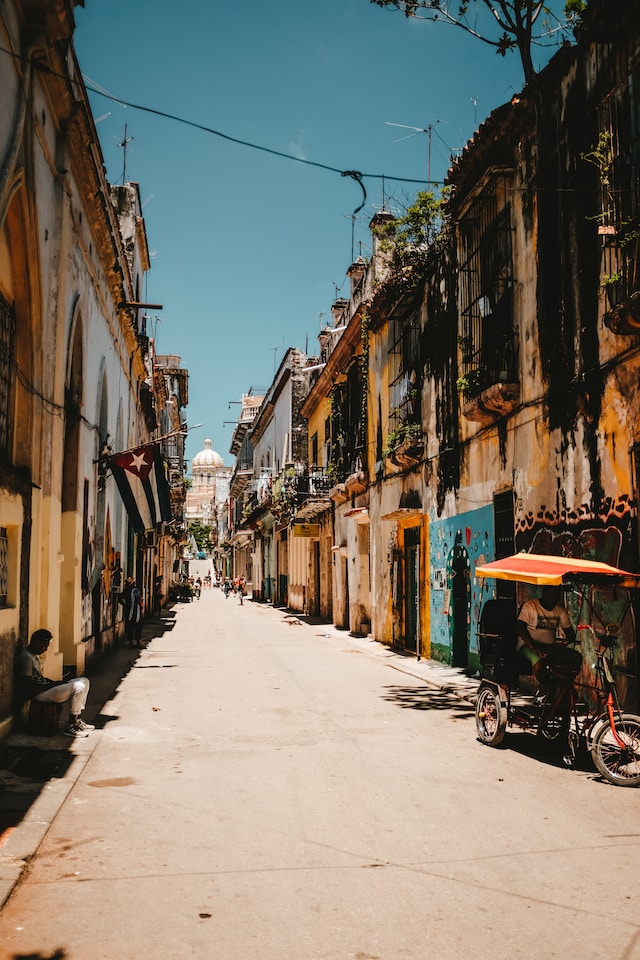
Havana, Cuba
Working in Havana
Havana offers a variety of co-working spaces and reliable internet access for digital nomads to work efficiently while enjoying the city’s vibrant atmosphere.
CoWorking Spaces
Finding suitable co-working spaces in Havana can be a challenge for digital nomads. Here are some important things to know:
- The concept of co-working spaces is relatively new to Cuba, so the options may be limited compared to other digital nomad-friendly destinations.
- Havana’s co – working spaces may not have the same amenities or infrastructure as those found in more developed cities.
- It is recommended for digital nomads to join online communities or associations specific to remote workers in Havana to gain insights and connect with others.
- Some digital nomads who have lived or currently live in Havana have expressed difficulties in finding adequate co-working spaces.
- The internet speed and reliability at these co-working spaces may vary, so it is advisable to bring a pocket Wi-Fi or portable internet device for a stable connection.
- Co – working spaces in Havana may not offer 24/7 access, so it is essential to check their operating hours before planning your work schedule.
- While there may be a lack of established co – working spaces catering specifically to remote workers in Havana, there are still shared offices and cafes that can serve as temporary workspaces.
Internet Availability
As a digital nomad in Havana, one of the main challenges you may face is internet availability. While it is true that Cuba has limited internet access compared to other countries, there are still options for staying connected and getting your work done.
Etecsa, the state-owned telecommunication offices, have branches throughout the city where you can purchase WiFi cards or access 3G data. These cards provide you with a set amount of time or data to use at designated WiFi hotspots around Havana.
Additionally, some areas in Havana even have 4G coverage, which provides faster and more reliable internet for remote work. However, it’s important to note that the availability and quality of internet access may vary depending on your location within the city.
Banking and Currency Exchange
As a digital nomad in Havana, one of the important aspects to consider is banking and currency exchange. Cuba operates on two currencies – the Cuban peso (CUP) and the new digital currency called MLC.
It’s essential to have access to cash as credit cards are not widely accepted, especially outside major tourist areas. ATMs are available in Havana, but there may be exchange charges, so it’s recommended to withdraw larger amounts at once.
Currency exchange services can be found throughout the city, including at the airport. Additionally, it’s advisable to check with your bank before traveling for any restrictions or additional fees associated with using your debit card in Cuba.
Exploring Havana – things to do in Havana
Explore the vibrant cultural and culinary delights of Havana, from indulging in traditional Cuban cuisine to immersing yourself in the local music scene and visiting iconic landmarks like Plaza de la Catedral.
Cultural and Food Experiences
As a digital nomad in Havana, Cuba, you can expect to have amazing cultural and food experiences. Here are some must-try activities and dishes to add to your list:
- Explore the colorful streets of Old Havana (La Habana Vieja), a UNESCO World Heritage site. Immerse yourself in the rich history and architecture of this charming neighborhood.
- Indulge in the local cuisine by trying traditional Cuban dishes like Ropa Vieja (shredded beef stew), Moros y Cristianos (black beans and rice), and Yuca con Mojo (boiled cassava with garlic sauce).
- Visit local markets such as Mercado de San José or Feria de Artesanía for handmade crafts, artwork, and souvenirs that capture the essence of Cuban culture.
- Attend live music performances at iconic venues like Casa de la Música or tourist hotspots like La Bodeguita del Medio and El Floridita, known for their connection to famous figures like Ernest Hemingway.
- Take salsa lessons at one of Havana’s many dance studios or join locals at vibrant nightclubs for an unforgettable night of dancing to infectious rhythms.
- Don’t miss out on visiting historic sites such as Plaza de la Catedral, El Capitolio, and Plaza de la Revolución, which offer insights into Cuba’s revolutionary past.
- Experience the art scene by visiting galleries like Fabrica de Arte Cubano or attending cultural events like the Havana Art Biennial.
- Treat yourself to a cigar tasting experience at a tobacco factory or visit a plantation in nearby Viñales to learn about the process of making Cuba’s famous cigars.
- Enjoy a day trip to the beaches closer to Havana, such as Playas del Este or Santa María del Mar, where you can relax under the sun and swim in turquoise waters.
- Engage with the local community by participating in neighborhood gatherings, joining language exchanges, or simply striking up conversations with friendly Habaneros.
Nightlife
As a digital nomad in Havana, you’ll quickly discover that the city comes alive with an exhilarating nightlife scene. From discos to bars, restaurants to cabarets, there’s no shortage of entertainment options once the sun sets.
The social energy is contagious, and it’s not uncommon for the party to start around 10 pm. What makes Havana’s nightlife truly special is its live music scene. You can find venues all over the city offering everything from traditional Cuban music to salsa rhythms that will have you dancing the night away.
The atmosphere is nothing short of magical, making Havana a vibrant destination for digital nomads seeking both work and play opportunities.
Things to Do
Havana offers a wide range of activities and attractions for digital nomads looking to explore the city. From immersing yourself in the vibrant culture to enjoying breathtaking sights, there’s something for everyone. Here are some must-do things in Havana:
- Wander through Old Havana’s cobblestone streets and admire the well – preserved colonial architecture.
- Visit the iconic Plaza de la Catedral and step into the majestic Cathedral of Havana.
- Explore the lively Malecon, Havana’s famous oceanfront boulevard, and enjoy stunning views of the sea.
- Dive into Cuba’s rich history by visiting the Museum of the Revolution or the Ernest Hemingway House Museum.
- Dance to traditional Cuban rhythms at Casa de la Música or catch live music performances at local bars.
- Indulge in authentic Cuban cuisine by trying delicious dishes like ropa vieja (shredded beef) and mojitos.
- Take a classic car tour through Havana and experience a nostalgic ride through its streets.
- Relax on one of Havana’s beautiful beaches, such as Playas del Este or Santa María del Mar.
- Join a salsa class and learn some moves from skilled local dancers.
- Take a day trip to Viñales Valley and explore its lush tobacco fields, caves, and picturesque landscapes.
Beaches and Nature
Havana, Cuba is not only known for its vibrant city life but also its stunning beaches and breathtaking natural landscapes. As a digital nomad in Havana, you can take advantage of these outdoor wonders during your downtime. Here are some of the best beaches and nature spots to explore:
- Veradero Beach: Just a short drive from Havana, Veradero Beach is a paradise for beach lovers. With its pristine white sand and crystal-clear turquoise waters, it’s the perfect place to relax and soak up the sun. Don’t forget your sunscreen!
- Bay of Pigs: Explore both history and nature at the Bay of Pigs, located near Havana. This area offers a unique combination of historical sites and natural beauty. Dive or snorkel in the colorful coral reefs or visit the museum that commemorates the historic events that took place here.
- Pinar del Río: If you’re craving more adventure and breathtaking scenery, head to the Pinar del Río province. Here, you’ll find picturesque white sand beaches, ideal for swimming or simply enjoying a peaceful day by the water.
- Sierra Maestra Mountains: For hiking enthusiasts, a trip to the Sierra Maestra Mountains is a must-do. This mountain range offers stunning vistas and challenging trails that will reward you with panoramic views once you reach their peaks.
- Jardines del Rey: Located on Cuba’s northern coast, Jardines del Rey is an archipelago boasting pristine beaches and lush natural landscapes. Spend your day exploring this beautiful area or simply unwind on one of its many secluded beaches.
- Varahicacos Ecological Reserve: Nature lovers will be delighted by Varahicacos Ecological Reserve situated near Veradero Beach. This protected area showcases unique flora and fauna along with stunning walking trails that allow you to immerse yourself in nature.
- Zapata Peninsula National Park: The largest wetland reserve in the Caribbean, Zapata Peninsula National Park is a haven for birdwatchers and nature enthusiasts. Take a boat tour through its mangrove forests or explore the park’s diverse ecosystem on foot.

An old red car by the seaside in Havana, Cuba.
Transportation in Havana
Getting around Havana is easy and affordable, with options such as taxis, buses, and even classic cars available for hire.
Getting Around the City
Navigating the city of Havana as a digital nomad can be an exciting adventure. Here are some tips and transportation options to help you get around easily:
- Taxis: Taxis are a popular mode of transportation in Havana. You can easily hail a taxi on the street or find them near popular tourist spots. It’s important to negotiate the fare before getting into the taxi to avoid any misunderstandings.
- Bicycle rentals: If you prefer a more eco-friendly way to explore the city, renting a bicycle is a great option. There are several rental shops scattered throughout Havana where you can find bicycles for daily or hourly rates.
- Walking: One of the best ways to truly experience Havana’s charm is by walking through its streets. The city has many pedestrian-friendly areas, especially in Old Havana, where you can stroll leisurely and enjoy the beautiful architecture and vibrant atmosphere.
- Bicitaxis: For shorter distances, consider taking a bicitaxi – a bicycle-powered taxi. These colorful three-wheeled vehicles are abundant in tourist areas and provide a unique way to travel while supporting local entrepreneurs.
- Public buses: While public buses in Havana may not be the most efficient option, they are an inexpensive way to get around the city. Be prepared for crowded buses and irregular schedules, so it’s advisable to plan your journey accordingly.
- Classic Cars: A visit to Havana wouldn’t be complete without experiencing a ride in one of their famous classic cars from the 1950s era. Many drivers offer tours around the city or can be hired for private trips, making it an unforgettable and nostalgic transportation choice.
- Colectivos: Colectivos are shared taxis that follow fixed routes within Havana and nearby areas. They offer affordable fares and operate similarly to public buses but with fewer stops and faster service.
- Horse-drawn carriages: In certain parts of Old Havana, you’ll find horse-drawn carriages waiting to take you on a leisurely tour around the historic district. It’s a charming way to experience the city’s colonial past.
Traveling to and from Havana
Traveling to and from Havana can be a unique experience due to the limited transportation options in Cuba. Here are some important facts to know:
- Domestic flights: Taking a domestic flight is one of the most convenient ways to travel between cities in Cuba. While the availability of flights can be limited, it is worth checking for options with local airlines.
- Private taxis: Private taxis are readily available in Havana and can be a great way to get around the city or travel to nearby destinations. Negotiating the fare beforehand is recommended to ensure a fair price.
- Collective or shared taxis: Shared taxis, known as “colectivos,” are an affordable option for traveling within Havana or between cities. These taxis follow set routes and pick up passengers along the way, making them a cost-effective choice for digital nomads on a budget.
- Self-driving in a rented vehicle: For those looking for more flexibility and independence, renting a car in Havana is possible. However, it is important to note that driving conditions in Cuba may be different from what you are used to, so caution is advised.
- Limited public transportation: Public transportation in Havana mainly consists of buses. While buses are an inexpensive option, they can be crowded and unreliable at times. Digital nomads who prefer using public transportation should plan their journeys accordingly.
Things to do in Cuba
Cuba, a vibrant Caribbean nation, offers a wealth of experiences and attractions for visitors. Here are some of the top things to do in Cuba:
1. Explore Old Havana: Wander through the historic streets of Havana’s Old Town (Habana Vieja), a UNESCO World Heritage Site. Admire the colonial architecture, vibrant plazas, and iconic landmarks such as the Plaza de la Catedral and the Castillo de la Real Fuerza.
2. Visit Varadero Beach: Relax and soak up the sun on the pristine shores of Varadero Beach. With its crystal-clear turquoise waters and powdery white sand, it’s a perfect spot for swimming, snorkeling, or simply unwinding under the swaying palm trees.
3. Experience Viñales Valley: Discover the breathtaking natural beauty of Viñales Valley, renowned for its striking limestone karsts, tobacco plantations, and vibrant green landscapes. Take a horseback ride through the valley, explore the underground cave systems, or visit a tobacco farm to learn about Cuba’s famous cigars.
4. Enjoy Cuban Music and Dance: Immerse yourself in the infectious rhythms of Cuban music. Experience live performances of salsa, son, rumba, or jazz in vibrant venues like Havana’s famous Tropicana or Santiago de Cuba’s Casa de la Trova.
5. Discover Trinidad: Step back in time in the colonial town of Trinidad, another UNESCO World Heritage Site. Stroll along its cobblestone streets, visit the beautiful Plaza Mayor, and explore the well-preserved mansions and museums that showcase the city’s rich history.
6. Dive into Coral Reefs: Explore Cuba’s underwater wonders by snorkeling or diving in its coral reefs. The Jardines de la Reina (Gardens of the Queen) marine park and the Bay of Pigs offer excellent diving opportunities with diverse marine life, vibrant coral formations, and underwater caves.
7. Visit Cienfuegos: Explore the “Pearl of the South,” Cienfuegos. Admire the French-influenced architecture, stroll along the Malecón, and visit iconic sites like the Palacio de Valle and the Teatro Terry.
8. Experience the Che Guevara Legacy: Pay a visit to Santa Clara, where you can explore the mausoleum and museum dedicated to Ernesto “Che” Guevara. Learn about his revolutionary history and the significant role he played in Cuba’s revolution.
9. Sample Cuban Cuisine: Indulge in the flavors of Cuban cuisine. Try traditional dishes such as ropa vieja (shredded beef), moros y cristianos (black beans and rice), and tostones (fried plantains). Don’t forget to savor a refreshing mojito or a classic Cuban cigar.
10. Take a Classic Car Ride: Experience the nostalgia of Cuba by taking a ride in a classic car, often seen cruising along the streets of Havana. Enjoy the iconic sights while being chauffeured in a vintage American car, adding a touch of old-world charm to your Cuban adventure.
These are just a few of the many incredible experiences that await you in Cuba. The country’s rich culture, history, natural beauty, and warm hospitality make it a captivating destination to explore.
Health and Safety
In terms of health and safety, it is important for digital nomads in Havana to have travel insurance that covers medical care. Additionally, there are fitness facilities available for those wanting to stay active during their stay.
To ensure personal safety, it is recommended to take precautions such as using common sense and being aware of your surroundings.
Insurance and Medical Care
As a digital nomad in Havana, it’s important to prioritize insurance and medical care. Medical expenses can be costly without insurance coverage, especially in countries like Cuba.
Over 80% of visitors to Cuba have insurance coverage from their home country, which covers their medical expenses during their stay. To ensure you’re protected, consider obtaining global health insurance that caters to your specific needs as a digital nomad.
SafetyWing and Insured Nomads are popular options for coverage while living in Cuba. Don’t overlook the importance of having life insurance as well, providing financial security for your loved ones.
Additionally, if you’re working remotely and need access to medical care while traveling, there are healthcare jobs available that allow you to work remotely while still receiving income and proper healthcare support.
Fitness and Health Facilities
Staying fit and healthy while working remotely in Havana, Cuba is not as challenging as you might think. The city offers a range of fitness and health facilities to cater to the needs of digital nomads and travelers. Here are some options to consider:
- Gymnasiums: There are several gyms in Havana that offer modern equipment and fitness classes. These gyms cater to different preferences, including weightlifting, cardio, and group exercise.
- Outdoor Fitness Parks: For those who prefer to exercise outdoors, Havana has several parks with outdoor fitness equipment. These parks provide a refreshing environment for workouts while enjoying the city’s beautiful weather.
- Yoga Studios: If you’re into yoga or want to explore this practice, there are yoga studios in Havana that offer a variety of classes for all levels. From Vinyasa to Hatha, you can find a class that suits your needs.
- Dance Classes: Cuban culture is known for its vibrant dance styles such as salsa, rumba, and Afro-Cuban dances. Taking dance classes not only keeps you fit but also allows you to immerse yourself in the local culture.
- Martial Arts Studios: Havana has martial arts studios where you can learn disciplines like boxing or taekwondo. Engaging in martial arts training provides an excellent opportunity for physical fitness and self-defense skills.
- Outdoor Activities: With its stunning beaches and natural landscapes, Havana offers various outdoor activities such as hiking, cycling, or swimming. These activities allow you to enjoy the beauty of the city while staying active.
- Wellness Centers: To rejuvenate your mind and body, consider visiting one of the wellness centers in Havana offering services like massages, acupuncture, and holistic treatments.
Tips for Staying Safe
As a digital nomad in Havana, it’s important to prioritize your safety. Here are some tips to help you stay safe while living and working in the city:
- Stay aware of your surroundings: Keep an eye on your belongings and be cautious of any suspicious activity around you.
- Use reliable transportation: When moving around the city, opt for registered taxis or ride-sharing services like Uber to ensure a safe journey.
- Avoid secluded areas at night: Stick to well-lit and populated areas when venturing out after dark to minimize the risk of being targeted.
- Protect your personal information: Be cautious with sharing sensitive information and keep your belongings secured, especially when working remotely in public places.
- Carry a copy of important documents: Make photocopies of your passport and other essential documents in case they get lost or stolen. Leave the originals locked safely at your accommodation.
- Be mindful of scams: While Havana is generally safe, it’s always wise to be cautious of common tourist scams such as currency exchange fraud or overcharging for goods and services.
- Respect local customs and laws: Familiarize yourself with Cuban customs and adhere to their laws to avoid any potential legal issues during your stay.
- Stay connected with emergency contacts: Keep a list of emergency contact numbers readily available, including local authorities and your embassy or consulate.
- Get travel insurance: Prioritize having comprehensive travel insurance that covers medical emergencies, trip interruptions, and theft, providing you with peace of mind during unforeseen situations.
- Trust your instincts: Ultimately, trust yourself when it comes to assessing risky scenarios or people you encounter while exploring Havana as a digital nomad.
Pros and Cons for digital nomads in Cuba
Being a digital nomad in Havana has its perks, such as the great weather and abundance of attractions to explore. However, it also comes with challenges like limited internet access and the need for cash-only payments.
Great Weather and Attractions
Havana offers digital nomads the perfect combination of great weather and captivating attractions. With its tropical climate, you can enjoy warm temperatures and plenty of sunshine throughout the year.
Whether you’re exploring the historic streets of Old Havana or lounging on one of the beautiful beaches nearby, you’ll be surrounded by stunning architecture and breathtaking scenery.
From the iconic Plaza de la Catedral to the vibrant nightlife in Vedado, there’s always something to see and do in this lively city. And with its rich history and cultural heritage, Havana provides endless opportunities for digital nomads seeking a unique experience that blends work and leisure seamlessly.
Challenges with Internet and Cash-Only Payments
As a digital nomad in Havana, one of the biggest challenges you’ll face is internet access. Reliable and fast internet connections can be hard to come by, making it difficult to work effectively.
In addition, cash-only payments are common throughout Havana, which can be inconvenient if you rely on online transactions or digital payment methods. It’s important to keep in mind that internet access in Cuba comes at a cost, and many locals may not have the financial means to afford it.
So while Havana offers incredible experiences for remote workers, it’s essential to be prepared for these obstacles and adapt accordingly during your stay as a digital nomad in this vibrant city.
Tips for Saving Money in Havana
To save money in Havana, consider cooking your own meals instead of eating out and take advantage of the local markets for affordable groceries. Use public transportation like buses and shared taxis to get around the city, as they are much cheaper than taking traditional taxis.
Additionally, be mindful of your spending habits and create a budget to track your expenses while living in Havana.
Food and Grocery Shopping
Living in Havana as a digital nomad offers opportunities to save money through grocery shopping. Grocery shopping in Havana is considered one of the best ways to save money, as Cuba offers a range of food options with prices varying from very cheap to relatively expensive. Meals in Cuba can start at around 70 CUP (Cuban Pesos) and can cost up to 1,000 CUP, depending on the choice of food.
- Varied Food Options: Cuba boasts a diverse culinary scene, with influences from African, Spanish, and Caribbean cuisines. There are a plethora of restaurants and street food vendors offering traditional Cuban dishes like rice and beans (moros y cristianos), roast pork (lechón asado), and fried plantains (tostones). These local eateries provide delicious meals at affordable prices for those on a budget.
- Cheap Local Markets: One of the best ways to save money on groceries is by exploring the local markets called “agromercados” or “mercados agropecuarios.” These markets offer fresh produce such as fruits, vegetables, and spices at incredibly low prices. It’s an excellent opportunity to immerse yourself in the local culture while staying within your budget.
- Peso Shops: To truly experience the authentic lifestyle in Havana, pay a visit to the peso shops known as “bodegas.” These government-subsidized stores sell basic necessities at incredibly low prices. You can find items like rice, beans, cooking oil, toiletries, and cleaning products here. Keep in mind that these stores only accept payment in Cuban pesos (CUP), so it’s essential to have some on hand.
- Farmer’s Markets: Another option for purchasing fresh produce is visiting farmer’s markets (“mercados campesinos”). These markets are usually open on weekends and offer a wide variety of fruits, vegetables, and other local products. Prices are generally lower than at regular supermarkets, and you can support local farmers in the process.
- Supermarkets: In addition to local markets, Havana has several supermarkets where you can find both Cuban and imported food items. Some well-known chains include Carrefour Express, Plaza Carlos III, and Tiendas Panamericanas. While prices may be slightly higher compared to the local markets, these supermarkets offer a wider selection of products for your convenience.
Budgeting and Cost-Saving Strategies / cost of living
As a digital nomad in Havana, budgeting and saving money is crucial. Here are some strategies to help you make the most of your funds:
- Eat in casa particulares: Budget travelers in Havana can save money by eating in their accommodation. Many casa particulares offer delicious home-cooked meals at affordable prices.
- Travel during the off-season: Consider traveling to Havana during the off-season when prices for accommodation and flights are lower. This can help you keep your costs down while still enjoying all that Havana has to offer.
- House sitting: If you’re open to house sitting opportunities, this can be a great way to save on accommodation costs. Websites like TrustedHousesitters connect digital nomads with homeowners who need someone to look after their property while they’re away.
- Choose the right travel insurance: It’s important to have travel insurance that covers medical expenses and other emergencies, but it doesn’t mean you have to break the bank. Do your research and find a policy that offers good coverage at a reasonable price.
- Be flexible with your travel plans: Being flexible with your travel dates and destination can help you find more affordable options in Havana. Keep an eye out for flight deals and be willing to adjust your itinerary if it means saving money.
- Exchange currency before traveling: Digital nomads can save time and money by exchanging their currency to Euros or Canadian dollars before arriving in Cuba. This is because there may be additional fees or unfavorable exchange rates when converting directly from other currencies.
Visa Requirements and Legal Considerations
To work and stay in Havana as a digital nomad, there are specific visa requirements and legal considerations that you need to be aware of.
Requirements for Stay and Work in Cuba
To stay and work in Cuba as a digital nomad, there are certain requirements that you need to fulfill. Here’s what you need to know:
- Visa: Citizens of other countries require a visa to enter Cuba. Different types of visas are available, including tourist visas, student visas, family visas, and work visas. The visa and residency policy in Cuba might not be a significant issue for digital nomads staying for a short period of time.
- Valid Passport: To enter Cuba, you need a passport with at least six months validity. Make sure you have two blank passport pages for entry and exit stamps.
- Medical Insurance: Medical insurance approved by the Cuban government is also a requirement for entering Cuba. This is important to ensure you have access to medical care during your stay.
- Complex Documentation: The legal documentation required to enter Cuba can be complex, so it’s advisable to plan ahead and gather all necessary documents before your trip.
- Visa Processing: It’s recommended to check the official website for Cuban visa information to get comprehensive details about the application process and requirements specific to your nationality.
Tips for Smooth Visa Processing
As a digital nomad planning to live and work in Havana, it’s important to understand the visa requirements and application process for Cuba. Here are some tips to help you navigate the visa processing smoothly:
- Start the application process early: Cuban visas can take some time to process, so it’s important to plan ahead and allow for sufficient processing time. Begin the application process as soon as you know your travel dates.
- Gather all necessary documentation: Make sure you have all the required documents ready before starting your visa application. This usually includes a valid passport with at least six months of validity remaining, a completed visa application form, proof of travel insurance, and proof of accommodation in Cuba.
- Research different types of visas: Cuba offers various types of visas depending on the purpose of your visit. Take the time to research and understand which type of visa is most suitable for your digital nomad lifestyle. For example, there may be specific visas for business purposes or longer stays.
- Seek assistance from third-party services: If you find the visa application process confusing or overwhelming, consider using online resources or third-party services that specialize in helping travelers obtain Cuban visas. These services can provide valuable guidance and support throughout the application process.
- Stay informed about any changes in visa regulations: Visa policies can change over time, so it’s important to stay updated on any new requirements or regulations regarding Cuban visas. Check official government websites or consult with reliable sources to ensure you have the most current information.
Conclusion
In conclusion, Havana, Cuba is a captivating destination for digital nomads seeking an adventurous and culturally rich experience. Despite the challenges with internet connectivity and visa requirements, Havana offers affordable living options and plenty of opportunities to explore the city’s unique charms.
With its vibrant culture, beautiful beaches, and friendly locals, Havana is a perfect place for digital nomads looking to work remotely while immersing themselves in the beauty of Cuban life.
So pack your bags and get ready for an unforgettable adventure in this enchanting city!
FAQs
1. Is Havana, Cuba a suitable destination for digital nomads?
Yes, Havana, Cuba can be a suitable destination for digital nomads. It offers a unique cultural experience, affordable cost of living, and reliable internet connectivity in certain areas. However, it’s important to note that the internet infrastructure in Cuba is still developing and can be unreliable at times.
2. Are there coworking spaces available in Havana?
Yes, there are several coworking spaces available in Havana. These spaces provide digital nomads with a productive work environment, high-speed internet access, networking opportunities, and amenities such as meeting rooms and coffee facilities.
3. How safe is it for digital nomads to work and live in Havana?
Havana is generally considered safe for tourists and digital nomads. However, like any city, it’s important to take necessary precautions to ensure personal safety and security. This includes avoiding risky areas at night or traveling alone in unfamiliar areas.
4. What visa options are available for digital nomads interested in staying long-term in Havana?
Cuba offers various visa options for individuals interested in staying long-term as digital nomads in Havana. This may include obtaining a business visa or applying for the Temporary Residence Permit (TRP) specifically designed for self-employed workers engaged in remote work or freelancing activities.
More Frequently Asked Questions
Q1: What is Havana?
Havana is the capital city of Cuba, known for its vibrant culture, rich history, and beautiful architecture. It is a popular destination for travelers from around the world.
Q2: How can I become a digital nomad in Havana?
Becoming a digital nomad in Havana is an exciting opportunity. You can enjoy the laid-back lifestyle while working remotely. To prepare for your digital nomad journey, make sure to have a valid visa, secure accommodation, and arrange for reliable internet access.
Q3: Is there a guide to Havana that I can follow?
Yes, there are various travel guides available for Havana. These guides provide valuable information about the top attractions, best places to eat, cultural experiences, and more. Check out the “Guide to Havana” section of our website for detailed recommendations.
Q4: Do I need a visa to travel to Cuba?
Yes, most visitors to Cuba require a tourist visa. You can obtain a tourist visa from the Cuban embassy or consulate in your country or through a travel agency. Make sure to check the specific requirements and regulations regarding visas before your trip.
Q5: Are there any popular beaches in Cuba?
Cuba is renowned for its stunning beaches. Some of the most popular beach destinations include Varadero, Cayo Coco, and Guardalavaca. These beaches offer crystal-clear waters, white sands, and various water activities.
Q6: What are the must-visit places in Old Havana?
Old Havana is a UNESCO World Heritage site and is packed with historical and cultural attractions. Some of the must-visit places in Old Havana include the Plaza de la Catedral, Plaza de Armas, and Castillo de la Real Fuerza.
Q7: How can I find a taxi in Havana?
Finding a taxi in Havana is relatively easy. You can hail a classic car taxi on the street or from designated taxi ranks. Additionally, you can use taxi-hailing apps or ask your accommodation provider to arrange a taxi for you.
Q8: Is there WiFi available in Havana?
Yes, there is WiFi available in Havana. However, internet access can be limited and expensive. You can access WiFi hotspots by purchasing internet cards or visiting WiFi zones such as
